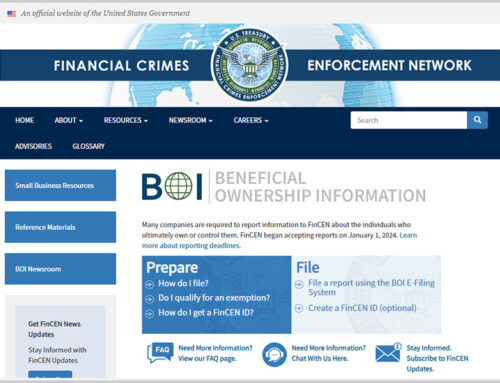Choosing the correct business form can be a difficult task. As a CPA, I see new businesses every year. Some could be operated more efficiently in a different business form. This Blog will go through some of the characteristics of the various business forms and help to identify the best form for your business.
Sole Proprietorship (Schedule C). This is the easiest and simplest.
- No need to register with the IRS or the State.
- Just you, with no partners.
- If it does not work out, then it can be closed without fanfare.
- Any net income is taxed as regular income PLUS self-employment tax of just under 15%.
- Office-in-home may apply.
- The regular Form 1040, Individual Income Tax Return, is used for filing. The business will go on a Schedule C.
- Schedule C expenses are not subject to Alternative Minimum tax.
Partnership (Form 1065). This is the “next step” if you have a partner and you still want to hold down costs and formalities.
- Generally, the net income is subject to self-employment tax.
- The business should keep a separate set of books and bank account.
- A separate Federal Tax ID number is obtained.
- There is no registration with the State (of California).
- There is generally no shelter from lawsuits.
- There can be separate splits among partners for income, losses, and equity.
So these are the two simple forms of businesses to have. If you feel that these will work, then don’t do more than this to get your business up and running.
If you want some legal separation from yourself, then the choices are:
- C Corporation,
- S Corporation, or,
- LLC, limited liability company.
C Corporation (Form 1120). All corporations start “life” as C Corporations. These are separate legal entities where they pay their own taxes. This is where “double taxation” can occur. The corporation pays taxes, issues a dividend to the shareholder, and he/she needs to pay taxes of this income, again. Any month-end can be chosen and there can be any number of shareholders. Public companies generally are this form.
S Corporation (Form 1120S). Smaller corporations use this form. The corporation pays no Federal tax and a small state (of California) tax. The business has a corporation “shell” (legal issue which is for the legal profession), but has nice tax benefits, as it does not get hit with double taxation.
LLC (Limited Liability Company). This is an entity not recognized by the Federal government, so the tax form can vary based upon the election made by the owners. There can be good legal attributes (to be discussed by the legal profession), with the taxation not well defined. This should be sorted out when the entity is first formed. An LLC can be reported on a Form 1040, 1065, 1120, or 1120S, depending on the number of members and elections made.
To set up a business as a separate legal entity generally becomes a useful discussion when sales or gross income is planned to exceed $125,000 to $200,000 a year. That is the minimum and can vary by industry or type of business.
Usually, a tax projection can be developed which will show the difference among types of entities (Corporation, partnership, etc.). This will provide a view of the financial side. A legal professional can assist with understanding legal issues.
Many times an estimate of the financial performance of this year can assist in looking forward to next year. If the result points to a new business entity form, like an S Corporation, then it is worthwhile to set it up for the new year.
Give us a call to discuss!


